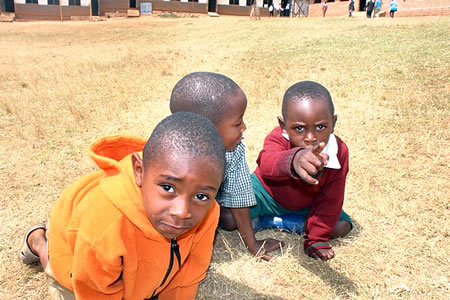UNCORRECTED refractive error is responsible for one-third of cases of visual impairment in children reported at the eye clinic of the University College Hospital (UCH), Ibadan, with the majority of them being older children, a study has said.
In the study, 366 children diagnosed with refractive errors accounted for 34.6 per cent of all children seen over the 24-month period, with the majority due to short-sightedness, and this occurring more in females.
In addition, almost two-thirds of the children in the study had some form of astigmatism, a common vision problem caused by an error in the shape of the cornea, which is the front surface of the eye.
The study said 229 of these children with refractive errors had never worn spectacles previously and only 80 children returned for a follow-up visit after the spectacles prescription.
Follow-up is particularly important in these children to assess uptake of prescribed spectacles, monitoring of spectacles wear and ensuring that optimal vision is maintained.
The most common presenting complaint was that of poor vision in 191 (71 per cent) children. Other complaints included eye ache and itching. Thirteen children had nonspecific complaints.
The study in the 2009 Annals of Ibadan Postgraduate Medicine Journal involved Olusanya B.A, Ugalahi M.O, Ogunleye O.T and Baiyeroju AM.
According to them, pubertal changes and earlier maturation that occur in girls may explain why more young girls than boys report visual problems more readily than boys.
The researchers declared that refractive errors constitute a common diagnosis among children seen in the hospitals in different regions of Nigeria among children and expressed concern on the late presentation and poor follow-up among these children.
They, however, declared that school eye health services should be considered a tool for early detection of refractive errors as well as the enhancement of treatment compliance and follow up adherence among children with refractive errors in the country.
It is estimated that 19 million children aged below 15 years are visually impaired globally. Twelve million of these are due to uncorrected refractive errors.
Uncorrected refractive errors in children can result in amblyopia, limited or slow academic progress, poor social functioning and impaired quality of life. Amblyopia is an eye condition that develops during childhood in which the vision in one eye is weaker than in the other.
Spectacles correction of refractive errors is considered one of the most cost-effective interventions in eye care. However, refractive errors often remain uncorrected due to various reasons.
These include a lack of awareness, failure to recognise symptoms in children by parents and teachers, non-availability or inability to afford refractive services and negative attitude to the use of spectacles in children.






